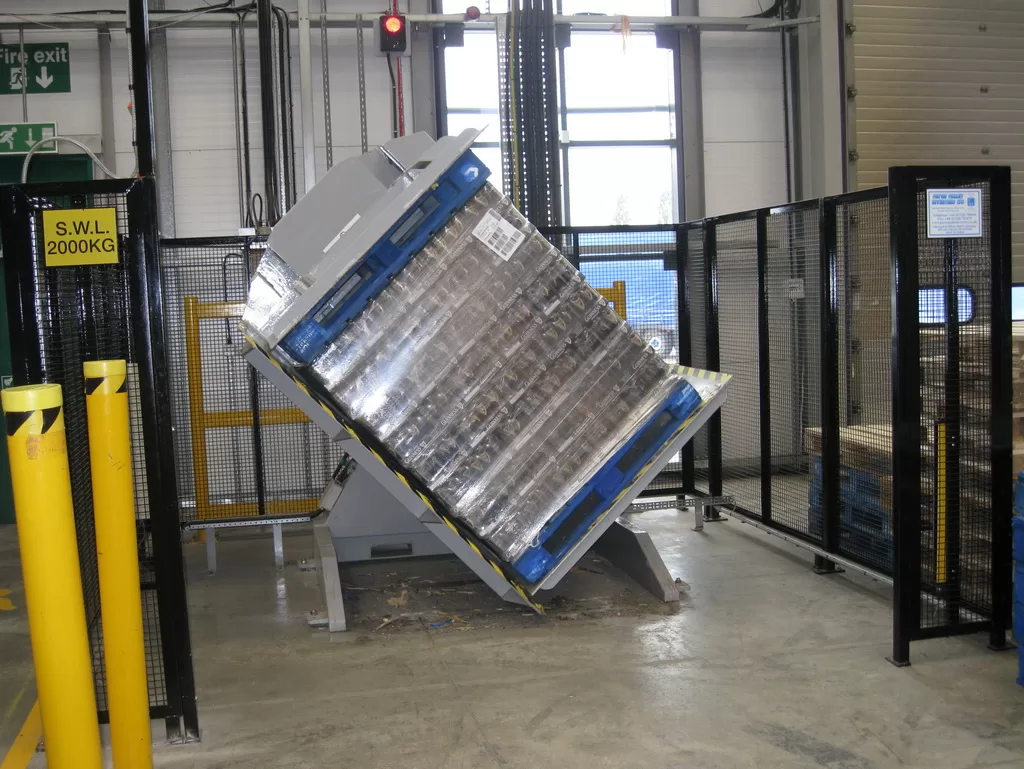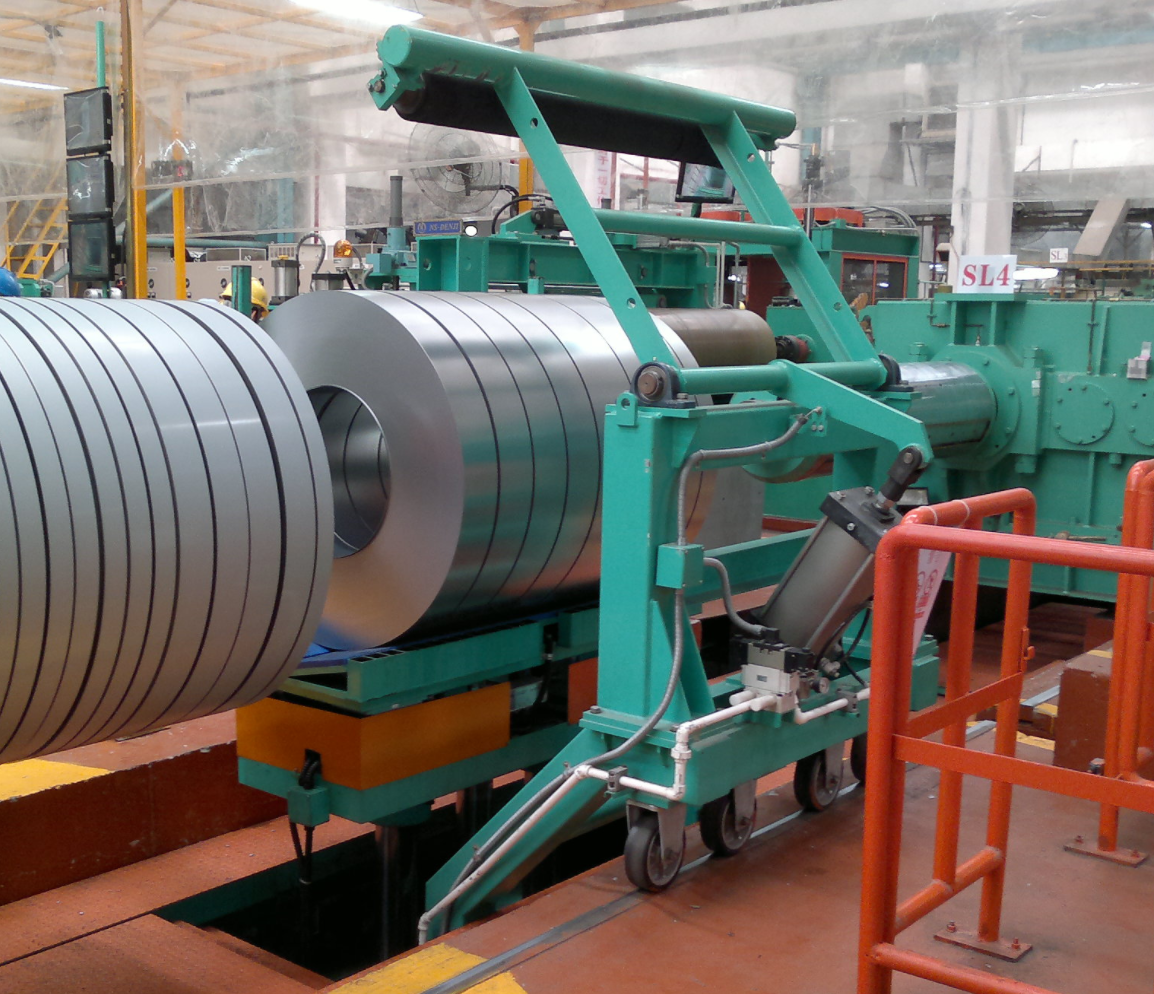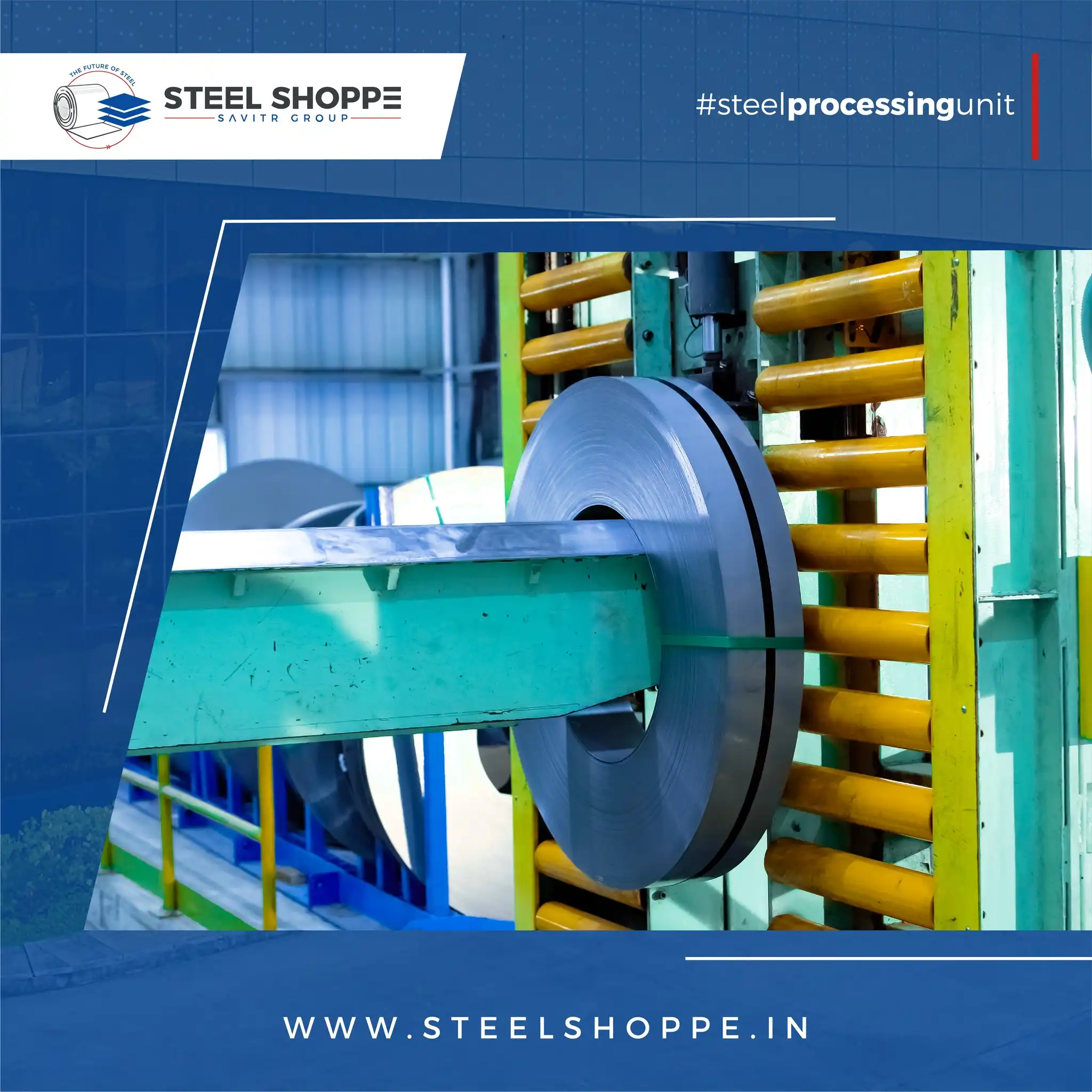How to Safely Store Steel Coils with Different Diameters
Are you losing sleep over the safety and efficiency of your steel coil storage? Improper storage can lead to damaged materials, unsafe workplaces, and significant financial losses. But it doesn’t have to be that way. Discover the essential guidelines for safely storing steel coils of all diameters and ensure your operations run smoothly and securely.
Storing steel coils safely, regardless of their diameter, involves using appropriate handling equipment, optimizing storage space with strategic layouts, implementing rigorous safety protocols, and considering automation for enhanced efficiency. This comprehensive guide will walk you through each critical aspect, ensuring your steel coils remain in prime condition and your workplace stays safe.
Let’s dive into the best practices that will transform your steel coil storage from a potential hazard into a model of industrial efficiency.
Choosing the Right Handling Equipment for Steel Coils
Handling steel coils, especially those with varying diameters, demands precision and the right machinery. Using inadequate equipment can lead to material damage, worker injury, and costly delays. Selecting the correct equipment is the first step to ensuring safe and efficient storage.
The ideal equipment for handling steel coils of different diameters includes forklifts with coil rams or C-hooks, overhead cranes with specialized coil lifting attachments, and automated guided vehicles (AGVs) for larger facilities. The choice depends on coil size and weight, facility layout, and operational volume. Proper training and certified operators are crucial for safe equipment operation. Investing in versatile and robust handling equipment is paramount for preventing accidents and maintaining material integrity.
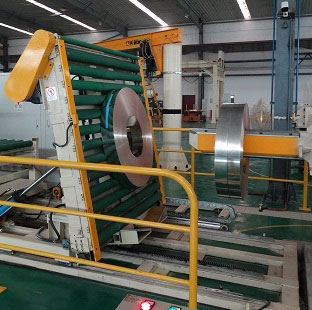
Equipment Selection Based on Coil Diameter: A Detailed Breakdown
Choosing the right equipment isn’t a one-size-fits-all solution. Different coil diameters and weights necessitate specific equipment to ensure safety and efficiency. Here’s a detailed breakdown to guide your selection:
Forklifts with Coil Rams
Forklifts are versatile and widely used for handling steel coils. When equipped with coil rams (also known as coil poles or booms), they become specialized for lifting coils through their inner diameter (eye-to-the-sky orientation).
| Feature | Small Diameter Coils (e.g., < 36 inches) | Medium Diameter Coils (e.g., 36-60 inches) | Large Diameter Coils (e.g., > 60 inches) |
|---|---|---|---|
| Forklift Type | Standard Forklift (sufficient capacity) | Heavy-Duty Forklift | Very Heavy-Duty Forklift |
| Ram Length | Shorter ram for maneuverability | Medium ram length for stability | Longer ram for deep coil penetration |
| Capacity | 3-5 tons | 5-10 tons | 10+ tons |
| Maneuverability | High | Moderate | Limited in tight spaces |
| Best Use Cases | Smaller warehouses, slit coils, transport to production line | General warehouse handling, medium-volume operations | Large warehouses, master coils, high-volume operations |
Overhead Cranes with Coil Lifters
Overhead cranes are ideal for handling very heavy coils and can offer more stability and precision compared to forklifts, especially for larger diameters. Various types of coil lifters can be used:
- C-Hooks: Simple and effective for lifting coils in eye-to-the-side orientation.
- Vertical Coil Grabs: Designed for eye-to-the-sky lifting, offering secure grip and rotation capabilities.
- Magnetic Lifters: Suitable for coils with consistent dimensions and weights, providing fast and efficient handling.
| Feature | Small Diameter Coils | Medium Diameter Coils | Large Diameter Coils |
|---|---|---|---|
| Crane Type | Light-Duty Crane | Medium-Duty Crane | Heavy-Duty Crane |
| Lifter Type | C-Hook, Vertical Grab | Vertical Grab, Magnetic | Vertical Grab, Magnetic |
| Capacity | 5-10 tons | 10-30 tons | 30+ tons |
| Stability | Very High | Very High | Very High |
| Precision | High | High | High |
| Best Use Cases | Production lines, precise placement, lower weight coils | Large warehouses, high throughput, varied coil sizes | Extremely heavy coils, high-volume storage, automated systems |
Specialized Coil Handling Equipment
For high-throughput facilities or specific needs, specialized equipment can significantly enhance safety and efficiency:
- Coil Upenders: To safely rotate coils from eye-to-the-sky to eye-to-the-side or vice versa.
- Automated Guided Vehicles (AGVs): For automated transport of coils within the warehouse, reducing manual handling.
- Stacker Cranes: For high-density vertical storage and automated retrieval in coil warehouses.
By carefully considering the diameter and weight of your steel coils and matching them with the appropriate handling equipment, you can drastically improve safety, efficiency, and reduce material damage in your storage operations. Always prioritize operator training and regular equipment maintenance to ensure optimal performance and safety.
Optimizing Storage Layout for Different Coil Diameters
Efficient storage layout is crucial for safety and space utilization, especially when dealing with steel coils of varying diameters. A well-planned layout minimizes handling, reduces the risk of accidents, and makes inventory management simpler. Strategically organizing your storage area is as important as choosing the right equipment.
Optimizing storage layout involves segregating coils by diameter and weight, utilizing vertical space with racking systems where possible, and ensuring sufficient aisle space for equipment maneuverability. For coils with larger diameters, floor stacking in designated areas with proper spacing and blocking might be necessary, while smaller diameter coils can be efficiently stored in multi-tier racks. Implementing clear labeling and inventory systems is essential for easy access and retrieval. A thoughtful storage layout is the backbone of a safe and efficient coil storage system.
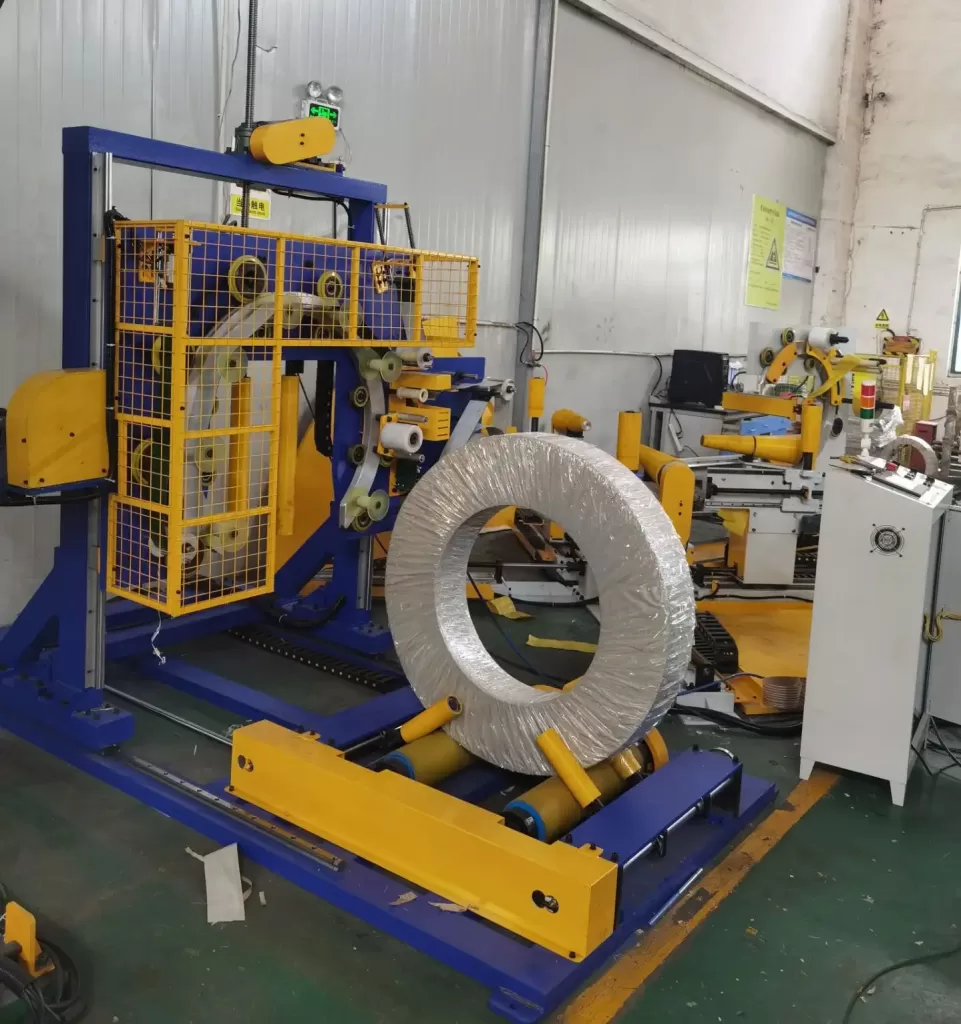
Strategies for Efficient Coil Storage Layout
Creating an optimized storage layout for steel coils of different diameters requires careful planning and consideration of several factors. Here are key strategies to implement:
Diameter-Based Zoning
- Segregation: Designate specific storage zones based on coil diameters. This reduces the need to handle coils multiple times and minimizes the risk of misplacing or damaging coils.
- Larger Diameter Zones: Allocate ground-level or easily accessible areas for larger diameter coils. These are typically heavier and less stable, making ground storage preferable. Use floor markings and barriers to define these zones clearly.
- Smaller Diameter Zones: Utilize vertical racking systems for smaller diameter coils. These coils are generally lighter and can be stacked higher, maximizing vertical space utilization. Ensure racks are rated for the specific weight and dimensions of the coils.
Vertical vs. Horizontal Storage
- Vertical (Eye-to-the-Sky): Ideal for long-term storage and maximizing space. Vertical storage is generally safer as coils are less likely to roll. It’s best suited for coils with smaller to medium diameters that can be stacked safely.
- Horizontal (Eye-to-the-Side): More practical for coils in work-in-progress or those frequently accessed for production. Horizontal storage allows for direct access with coil rams or C-hooks but requires more floor space and careful blocking to prevent rolling. Consider using cradles or chocks for horizontal storage, especially for larger diameter coils.
Space Optimization Techniques
- Racking Systems: Implement adjustable racking systems to accommodate different coil diameters and heights. Ensure racking is professionally installed and regularly inspected for structural integrity.
- Floor Stacking: For larger diameter coils stored on the floor, use a pyramid stacking method (if appropriate and safe for your coil type and size) or row stacking with sufficient spacing between rows for access and fire safety. Limit stacking height based on coil stability and safety regulations.
- Aisle Widths: Design aisle widths that are appropriate for the largest handling equipment used in each zone. Wider aisles are needed for larger diameter coils and heavier equipment. Ensure aisles are clearly marked and kept free of obstructions.
Environmental Considerations
- Climate Control: If coils are sensitive to moisture or temperature fluctuations, consider climate-controlled storage areas, particularly for smaller diameter coils with larger surface area relative to their volume, which might be more prone to environmental effects.
- Ventilation: Ensure adequate ventilation in all storage areas to prevent moisture buildup and corrosion, especially important for tightly packed vertical storage of smaller diameter coils.
Inventory and Labeling
- Clear Labeling: Implement a robust labeling system that includes coil diameter, weight, material type, and production date. Color-coding zones and labels can further enhance efficiency.
- Inventory Management System: Use a digital inventory system to track coil locations, diameters, and quantities in real-time. This streamlines retrieval and reduces the time spent searching for specific coils.
By implementing these layout strategies, you can create a steel coil storage area that is not only space-efficient but also significantly safer and easier to manage, regardless of the variety in coil diameters you handle.
Implementing Safety Protocols for Steel Coil Storage
Safety is paramount when storing steel coils, especially given the range of diameters and weights involved. A robust safety protocol protects your workforce, prevents material damage, and ensures operational continuity. Neglecting safety can lead to severe consequences.
Essential safety protocols for steel coil storage include mandatory PPE (Personal Protective Equipment) for all personnel in the storage area, comprehensive and regular safety training programs focusing on coil handling and equipment operation, designated safety zones and walkways, and routine inspections of equipment and storage areas. Specific protocols should address the unique challenges posed by different coil diameters, such as increased weight and instability of larger coils. Emergency response plans and readily available safety equipment are also critical components. Prioritizing safety creates a culture of prevention and responsibility.

Detailed Safety Protocols for Handling Steel Coils
To ensure a safe working environment when storing steel coils of various diameters, a comprehensive set of safety protocols is necessary. Here’s a detailed breakdown of essential measures:
Personal Protective Equipment (PPE)
| PPE Item | Purpose | Diameter-Specific Considerations |
|---|---|---|
| Steel-toed boots | Protect feet from crushing injuries if coils are dropped or rolled. | Essential for all coil diameters due to the heavy nature of steel coils. |
| Safety Gloves | Improve grip and protect hands from sharp edges and abrasions. | Heavy-duty gloves recommended for larger, potentially rustier coils. |
| Safety Glasses | Protect eyes from dust, debris, and potential flying particles during handling. | Standard for all operations; consider face shields for high-risk tasks. |
| Hard Hats | Protect head from impact in areas with overhead coil handling. | Mandatory in areas where overhead cranes are used, especially with larger coils. |
| High-Visibility Vests | Enhance visibility of personnel in busy storage areas. | Crucial in areas with forklift traffic, particularly around large coil zones. |
Safety Training Programs
Comprehensive training is the cornerstone of safety. Programs should include:
- Equipment Operation: Certified training for all forklift, crane, and other handling equipment operators. Training should be specific to the equipment types used for different coil diameters.
- Safe Lifting Techniques: Proper techniques for lifting, moving, and setting down coils, emphasizing slow, controlled movements and avoiding sudden stops or starts. Address specific challenges related to larger, heavier coils.
- Hazard Awareness: Training on potential hazards in coil storage areas, including coil roll-over, falling coils, pinch points, and equipment malfunction. Highlight risks associated with handling different coil diameters.
- Emergency Procedures: Training on emergency shutdown procedures, evacuation plans, fire safety (especially considering pallet flammability), and first aid protocols.
- Refresher Training: Regular refresher courses to reinforce safety protocols and update employees on any changes or new best practices.
Operational Safety Procedures
- Pre-shift Equipment Checks: Mandatory daily inspections of all handling equipment before operation, checking for any malfunctions or wear and tear.
- Designated Safety Zones: Clearly marked safety zones and walkways to separate pedestrian traffic from equipment operating areas. Enforce strict adherence to these zones.
- Load Capacity Limits: Strictly adhere to load capacity limits for all handling equipment and storage racks. Never exceed rated capacities, especially when handling larger diameter, heavier coils.
- Coil Inspection: Inspect coils for damage or instability before storage and handling. Damaged coils should be quarantined and addressed immediately.
- Weather Considerations: Procedures for handling coils in adverse weather conditions (wind, rain, ice), especially when operating outdoors or in partially covered areas.
Emergency Preparedness
- Emergency Equipment: Readily accessible fire extinguishers (appropriate for potential pallet fires), first aid kits, spill kits, and emergency contact information.
- Emergency Drills: Regular drills for fire, evacuation, and other emergency scenarios to ensure preparedness and effective response.
- Communication Systems: Reliable communication systems (radios, alarms) to alert personnel in case of emergencies.
By diligently implementing these detailed safety protocols, businesses can significantly mitigate risks associated with steel coil storage, ensuring a safer and more productive workplace for handling coils of all diameters.
The Role of Automation in Enhancing Steel Coil Storage
Automation is revolutionizing steel coil storage, offering significant improvements in efficiency, safety, and space utilization. As industries demand faster throughput and safer operations, automated systems are becoming indispensable. Embracing automation is no longer a luxury, but a necessity for staying competitive.
Automation in steel coil storage encompasses technologies like Warehouse Management Systems (WMS) for optimized inventory and location management, automated stacker cranes for high-density vertical storage and retrieval, and Automated Guided Vehicles (AGVs) or robots for material transport. These systems minimize manual handling, reduce human error, enhance safety, and optimize storage density, particularly beneficial when managing steel coils of different diameters and weights. Automation leads to increased throughput, reduced labor costs, and a safer working environment. Investing in automation is a strategic move towards future-proofing steel coil storage operations.

Benefits of Automation in Steel Coil Storage
Integrating automation into steel coil storage operations offers a multitude of advantages, transforming traditional warehousing into efficient, safe, and high-throughput facilities. Here’s a closer look at the key benefits:
Increased Efficiency and Throughput
- Faster Handling: Automated systems, such as stacker cranes and AGVs, operate at consistent speeds and can handle coils much faster than manual operations, significantly increasing throughput.
- Optimized Storage and Retrieval: WMS software optimizes storage locations based on coil diameter, weight, and access frequency, ensuring faster retrieval times and minimizing unnecessary movements.
- 24/7 Operation: Automated systems can operate continuously without breaks, enabling round-the-clock operations and maximizing productivity.
Enhanced Safety
- Reduced Manual Handling: Automation minimizes the need for manual handling of heavy and unwieldy steel coils, significantly reducing the risk of worker injuries, such as strains, sprains, and crushing accidents.
- Precise and Controlled Movements: Automated equipment operates with precision, reducing the chances of collisions, dropped coils, and damage to materials or infrastructure.
- Safer Working Environment: By separating human workers from heavy lifting and transport tasks, automation creates a safer environment, reducing the risk of accidents in the storage area.
Optimized Space Utilization
- High-Density Vertical Storage: Automated stacker cranes enable high-density vertical storage, maximizing the use of vertical space and significantly reducing the footprint required for coil storage.
- Narrower Aisles: Automated systems often require narrower aisles compared to forklift operations, further optimizing space utilization within the warehouse.
- Dynamic Storage Allocation: WMS software dynamically manages storage space, efficiently allocating locations based on coil dimensions and optimizing overall storage density.
Reduced Operational Costs
- Lower Labor Costs: Automation reduces the need for manual labor in coil handling and storage, leading to significant savings in labor costs over time.
- Minimized Material Damage: Precise handling and optimized storage conditions reduce the risk of coil damage from mishandling, corrosion, or improper storage, minimizing material waste and associated costs.
- Energy Efficiency: Modern automated systems are designed for energy efficiency, reducing energy consumption compared to traditional manual operations.
Improved Inventory Management
- Real-time Inventory Tracking: WMS provides real-time visibility of inventory levels, coil locations, and storage conditions, improving inventory accuracy and management.
- Reduced Inventory Errors: Automated data capture and tracking minimize human errors in inventory management, ensuring accurate stock levels and reducing discrepancies.
- Better Traceability: Automated systems can track coils throughout the storage and retrieval process, providing better traceability and accountability.
By embracing automation, steel coil storage facilities can achieve significant improvements across efficiency, safety, space utilization, and cost-effectiveness, making it a strategic investment for modern industrial operations.
Conclusion
Storing steel coils of different diameters safely and efficiently requires a multifaceted approach. From selecting appropriate handling equipment and optimizing storage layouts to implementing robust safety protocols and leveraging automation, each element plays a crucial role. By prioritizing these best practices, businesses can ensure the integrity of their steel coils, protect their workforce, and enhance overall operational efficiency. Embracing automation is the key to future-proofing steel coil storage and achieving operational excellence.


